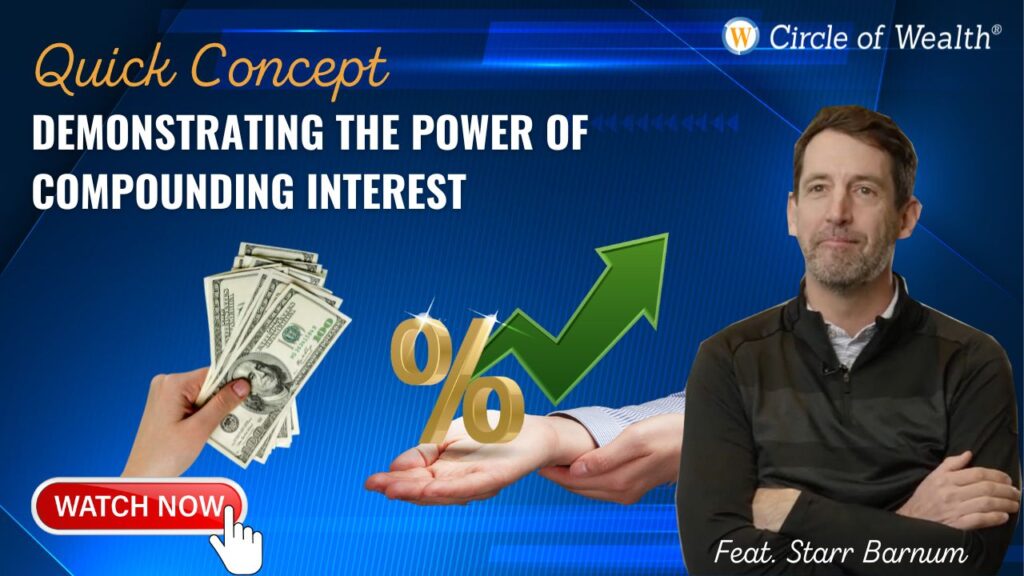If you’ve ever wondered whether it’s better to pay for major expenses with cash or through a policy loan from a properly structured cash-value life insurance policy, you’re not alone. It’s a question that comes up often—and it’s a powerful conversation to have with clients who want to understand how to make their money work more efficiently.
In the video below, we walk through a side-by-side comparison that highlights the long-term impact of each strategy. Here’s a breakdown of what we covered.
The Policy Loan Strategy
We started by using a valid life insurance illustration showing $24,000/year in premiums for 26 years. In year 5, the client takes a $50,000 policy loan. Then, over the next five years, they pay it back at $11,421 per year.
By year 26:
-
Cash Value: $1.133 million
-
Death Benefit: $1.616 million
This assumes continued funding and responsible loan repayment—something that the policy is designed to support over time.
The “Just Pay Cash” Alternative
Some clients say, “I don’t want to take a loan. I’d rather just pay cash and avoid interest.” So let’s look at what happens when they follow that path.
To make it a fair comparison, we assume:
-
The same $50,000 withdrawal happens in year 5.
-
Instead of a policy loan, the client puts $11,421/year into a taxable account for five years at a 5.1% return, taxed at a 28% marginal rate (federal + state).
Result at year 26:
-
Final balance: ~$1.055 million
-
No death benefit
But wait—most people don’t actually charge themselves interest when repaying a withdrawal. More realistically, they’d just pay the original $50,000 back—say, $10,000/year for five years.
In that more realistic case, their final result drops to around $1.041 million—a significantly lower long-term outcome.
What Happens If You Do It More Than Once?
That’s the real kicker. Most people don’t take a loan just once. They might use their policy multiple times over the years—for cars, education expenses, business opportunities, or emergencies.
On the policy loan side, the long-term value remains intact—as long as the loans are paid back.
But on the cash side? Each new withdrawal has a compounding negative effect. Whether it’s two, four, or five times, the cash strategy keeps falling further behind.
The Bigger the Purchase, the Bigger the Gap
What if the purchase is $100,000 or $200,000 instead of $50,000?
The gap between the two strategies gets even wider. The more efficiently you use the loan-and-repay strategy within the policy, the more control and long-term value you retain—both in cash value and death benefit.
What Clients Realize
When we walk clients through this demonstration:
-
They see the value of the strategy.
-
They understand why keeping money in motion—earning uninterrupted compounding—is so powerful.
-
They begin to think differently about financing large expenses or seizing opportunities.
As one advisor put it:
“When I coach clients through this, they can’t wait to start funding their policy. And when the time comes to make a major purchase, they remember this conversation—and use their policy as the most efficient tool to do it.”
Watch Starr Barnum demonstrate this concept:
Want to Show This to Your Clients?
Circle of Wealth® gives you the tools to walk clients through conversations like this—visually, simply, and persuasively. When people see the difference, they make better decisions.
➡️ Ready to take your client conversations to the next level?
🚀 Try the Software + Coaching – Experience it firsthand with a complimentary trial. 👉 Start Your Free Trial
🎥 Watch our “Learn More” videos – See how the system works in real client scenarios. 👉 Watch Videos Now
🤝 Join Now – Offering Monthly and Annual Subscriptions 👉 Reviewing Pricing and Join
